“Going back to Rockville” – another Wilton blog
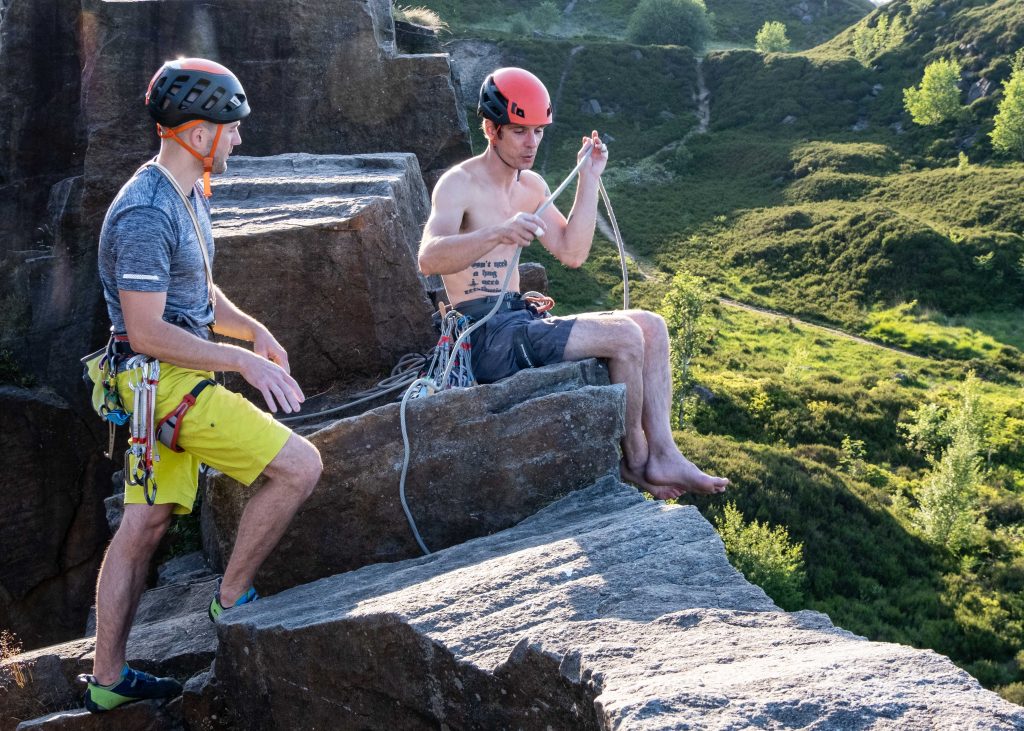
R.E.M. tributes aside, you may remember that right at the start of lockdown, I started exploring paths accessible on foot from home, to make the most of my daily permitted exercise, and a route that quickly became my favourite was through the series of Wilton Quarries onto the moors.
At this time the quarries were empty – I hardly met anyone else anywhere on these early lockdown journeys. Spring was just breaking through too, with the quarry taking on a that zesty, lime green colour from the fresh new shoots appearing on the trees and shrubs.

As soon as some of the restrictions lifted, I was pleased to see climbers heading back to the quarry, bringing back more signs of life and activity. It seems that these quarries in particular are favoured as while they’re generally not too busy, they’re also easily accessible transport-wise.
Having written a blog about the quarry at the start of lockdown, Sandstone, Scaling and Shooting, I was keen to revisit this subject, but this time with climbers to see it more from their perspective.
On one of my walks through Wilton 1, I met Allan and his climbing friends. He too is keen on photography, so we got chatting around an idea for me to join up with him and his friends to take shots of them climbing.
Not long after, on a sunny evening at the end of June, we agreed to meet at the quarry.
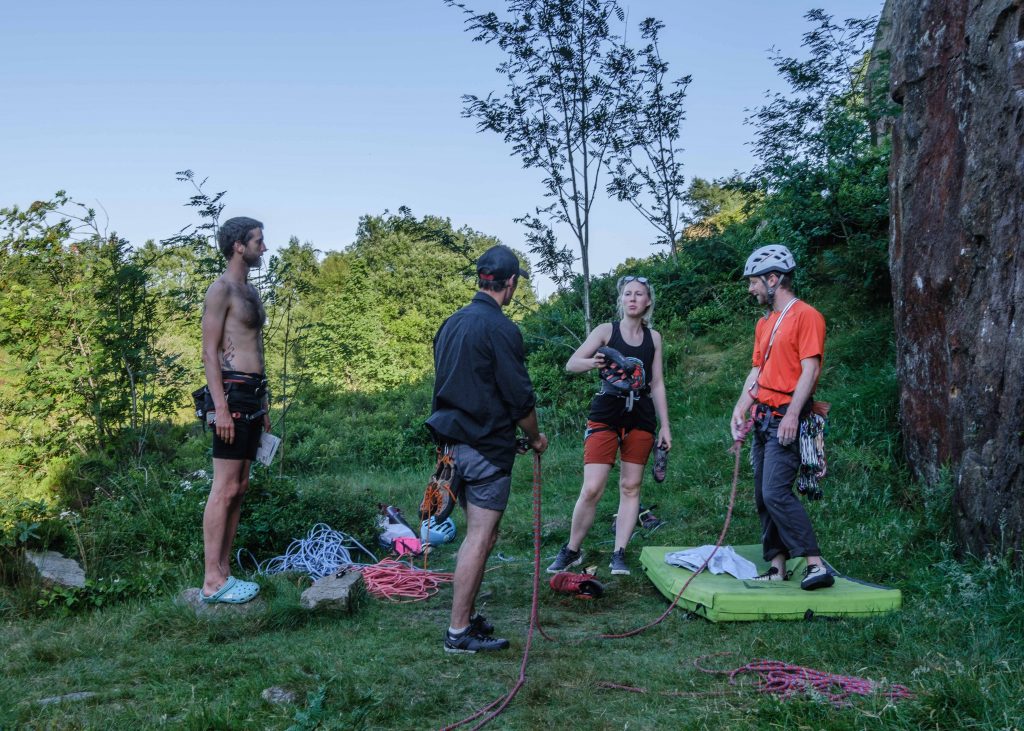
Most of the group had assembled by the time I arrived and had already organised their climbing gear ready for the evening.
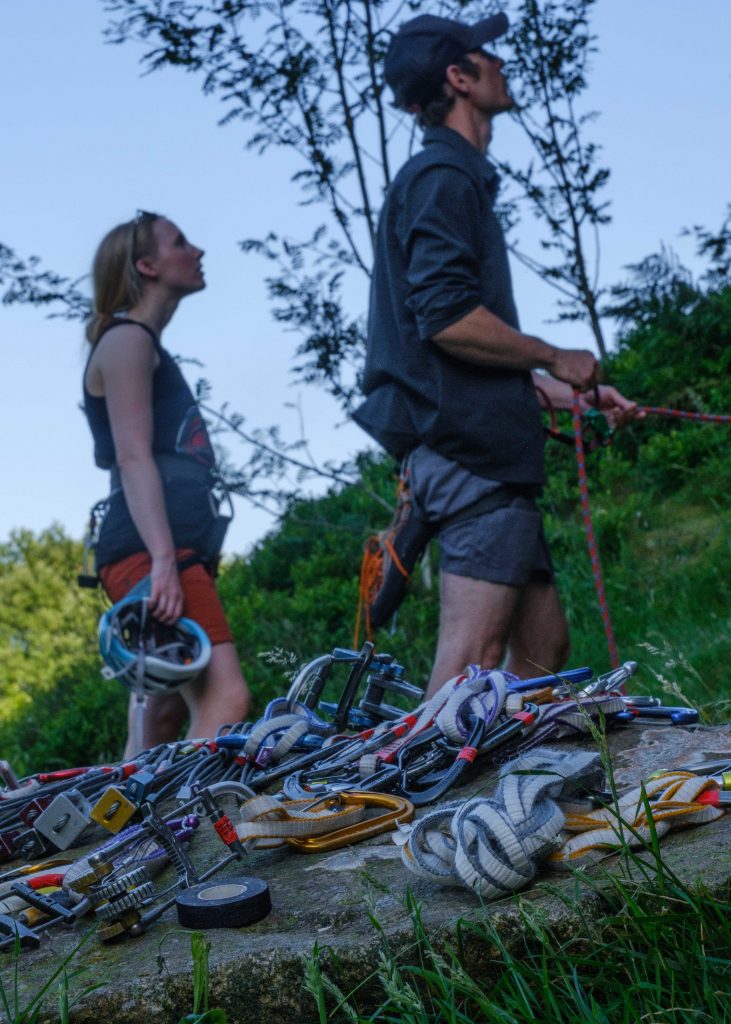
Not being a climber myself, I felt a bit like a duck out of water and even though I love hillwalking and scrambling, this felt like quite a different world altogether – although that’s certainly not a reflection at all on Allan and his friends Louise, Jon, Alec, Tom and Street, who made me feel very welcome indeed.
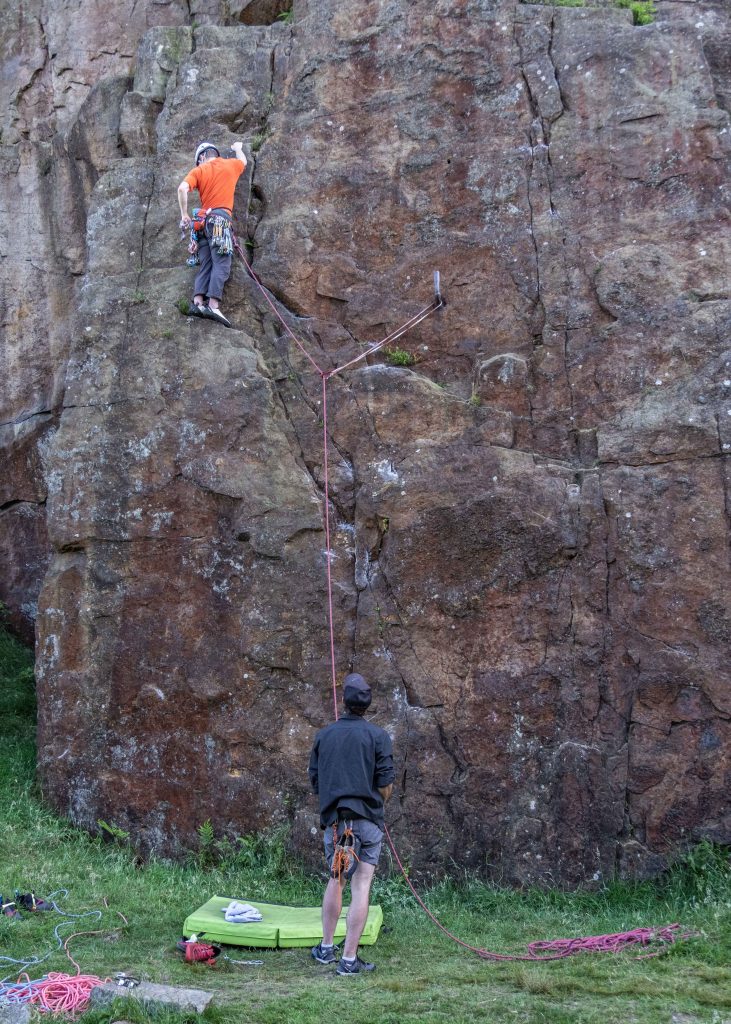
I was pleased that they’d chosen to pick some routes up The Prow, the most prominent and spectacular rock feature in the set of quarries. Mentioned in my earlier blog, the best way I can describe this is as an 80-foot-high but thin curtain of rock that protrudes into the quarry, so it presents two almost vertical and almost parallel faces of rock for climbing.
Organising themselves into teams of two, Jon and Tom (the leads for each pair) started the climb, marking out their respective routes with their climbing hardware neatly strung around their waists, along with bags of chalk.
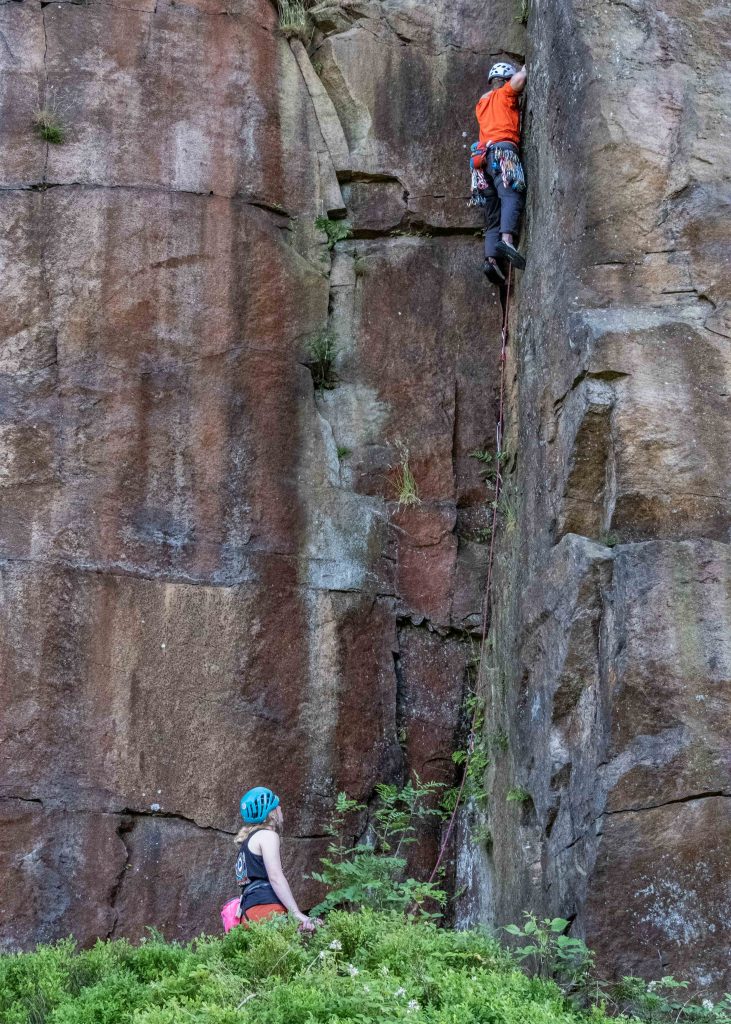

Later, Tom explained to me that this is called Traditional (or “Trad”) Climbing and differs from Sport Climbing in that the lead climber has to place their own cams and nuts in cracks and crevices in the climbing face for their own protection. The second climber then removes these as they ascend. Sport Climbing, by comparison, has ready-positioned permanent bolts that the lead can use, so can be much faster and is somewhat safer.
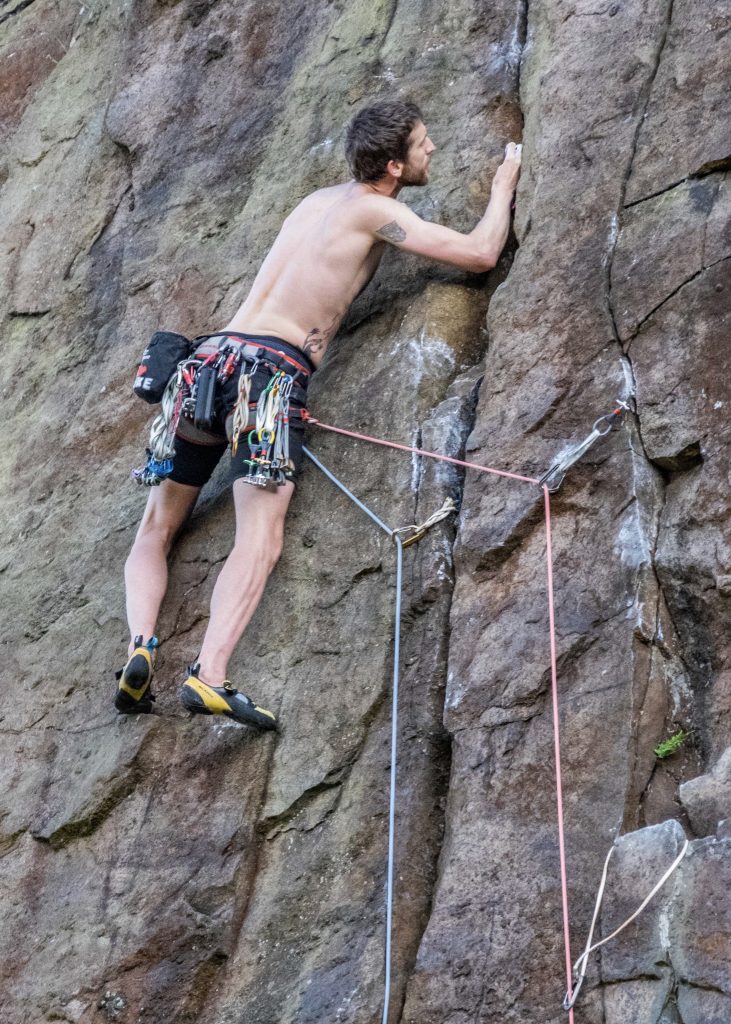
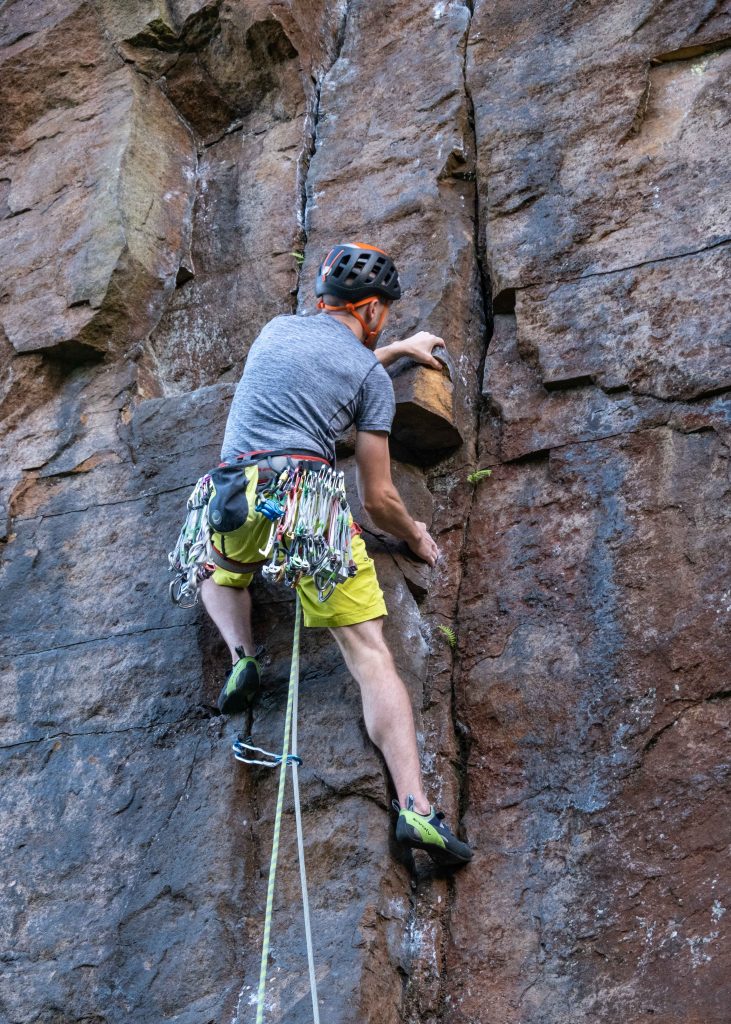
Interestingly, the quarries have some permanent bolts in certain places, so the team made use of these too. I’m sure Tom won’t mind me saying it took more than one attempt to lasso this bolt, but its still pretty impressive that he succeeded while also clinging on like this to the rock face!
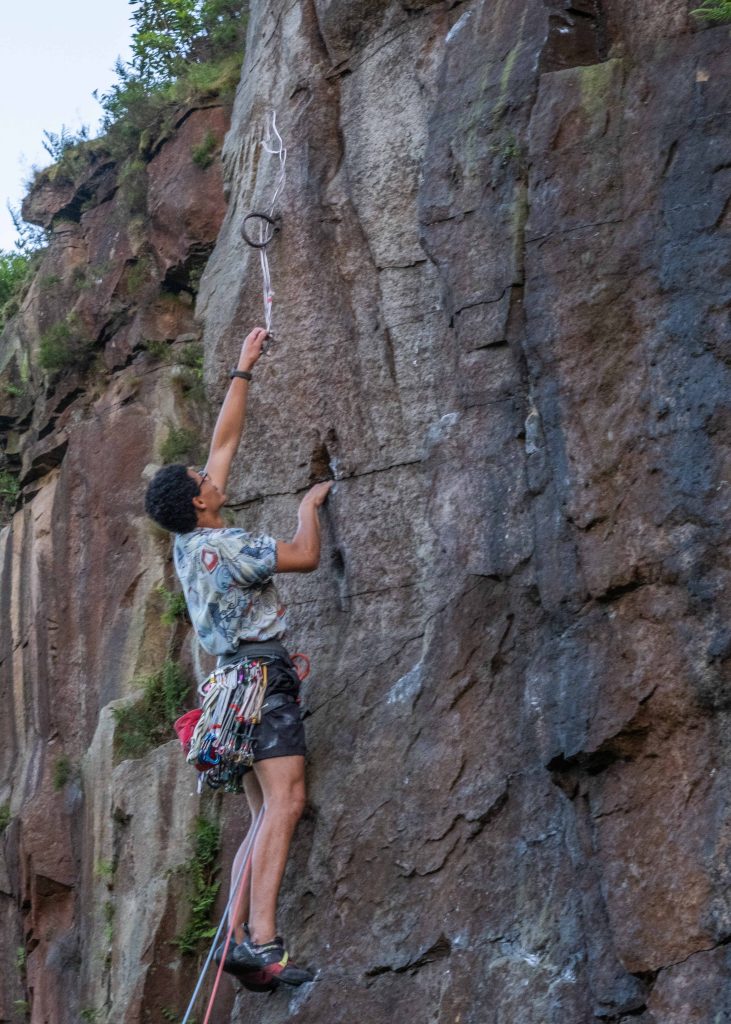
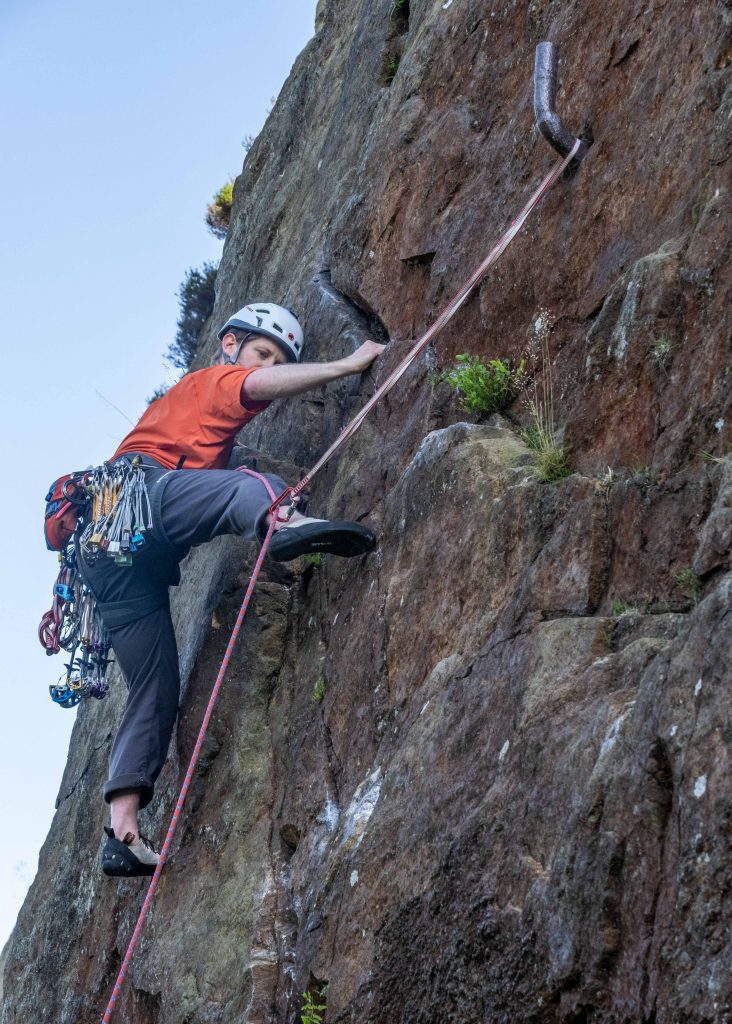
With Jon reaching the top of The Prow and securing the rope, Louise made a start up the rock face. She mentioned to me that she’d initially just gone along with friends to an indoor climbing wall and has been hooked on the sport since. She certainly looked confident and proficient as she found footholds and lifted herself up along the route that Jon had marked out.
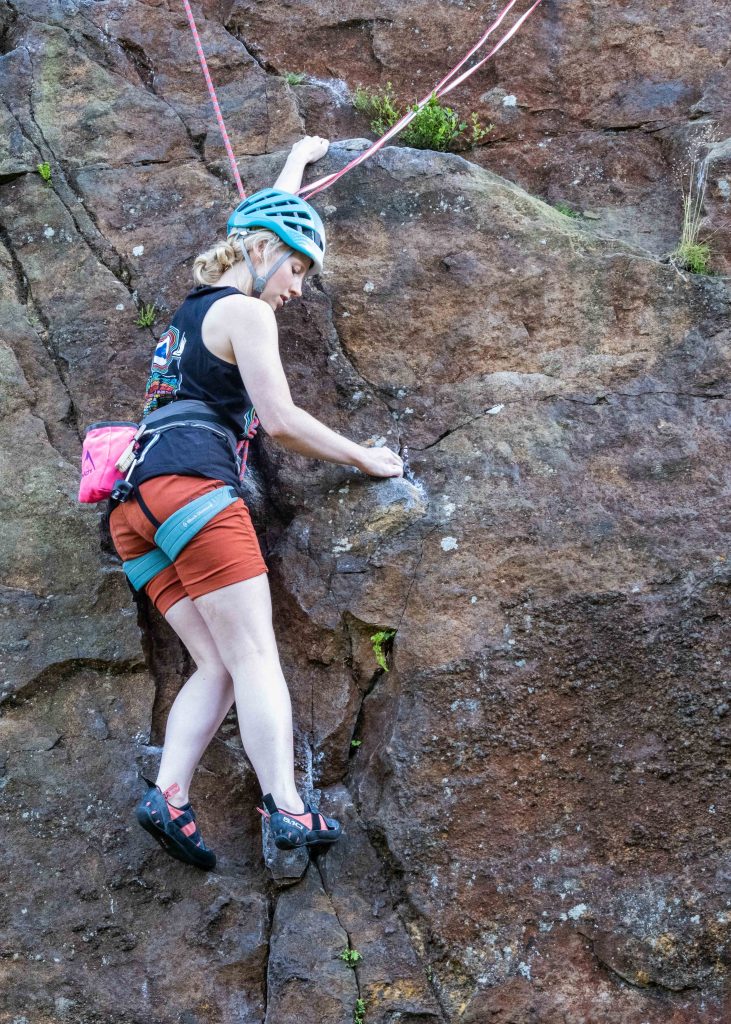

While I was watching the leads competently making their way up the face of The Prow, Allan talked about the climbing philosophy. Much like hill-walkers and hikers, there’s a deep-rooted respect for the places that climbers visit, aiming at all costs to minimise any damage to the environment – take only photos, leave only footprints, as the saying goes. With us both being photographers, we commented on how easy it was to inadvertently litter places by losing lens caps and the ways we each used to stop that happening. I admit, I haven’t found a fool-proof technique just yet.
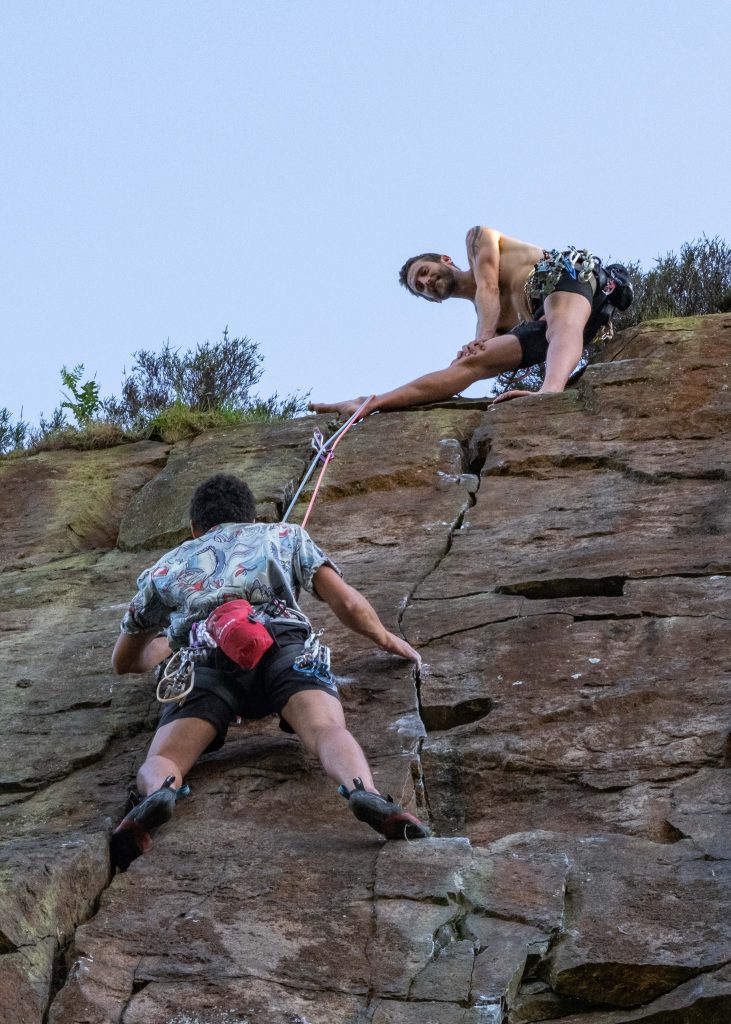
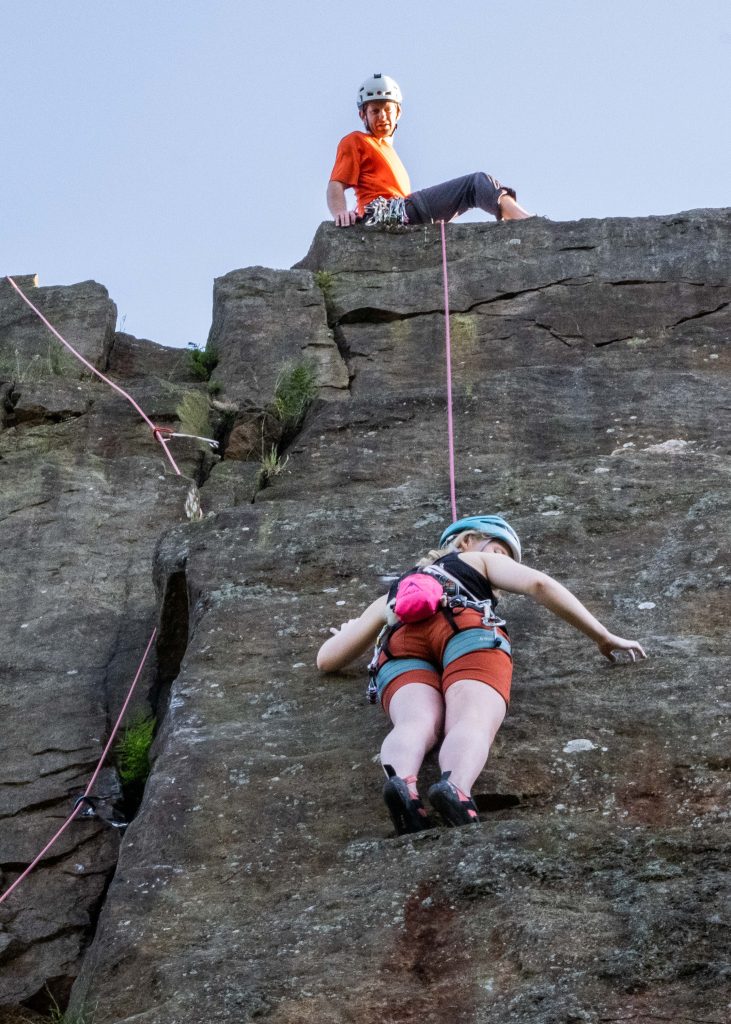
For walkers like me, the route to the top of The Prow is along a series of paths that traverse the quarry. Taking a circuitous path and gaining height, I was amazed to see just how many climbers this spell of good weather had brought out.
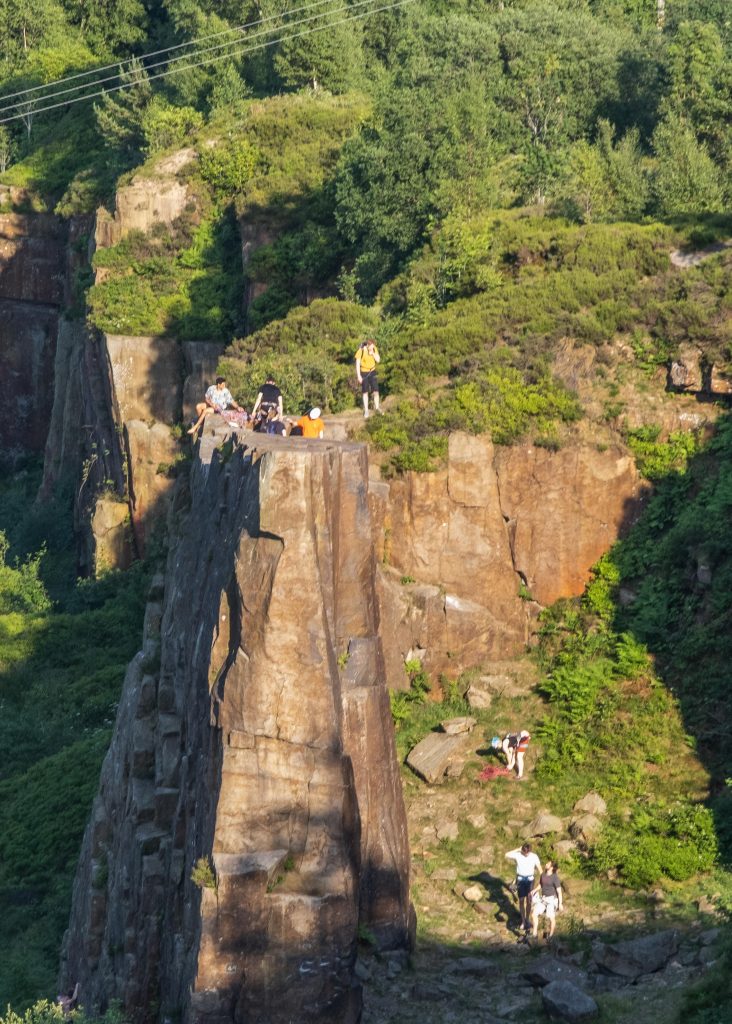
There were pairs of climbers all along the length of the quarry rock face. As I walked through, I noticed a climber tackling this almost right-angled indentation, which looked quite a fascinating challenge.
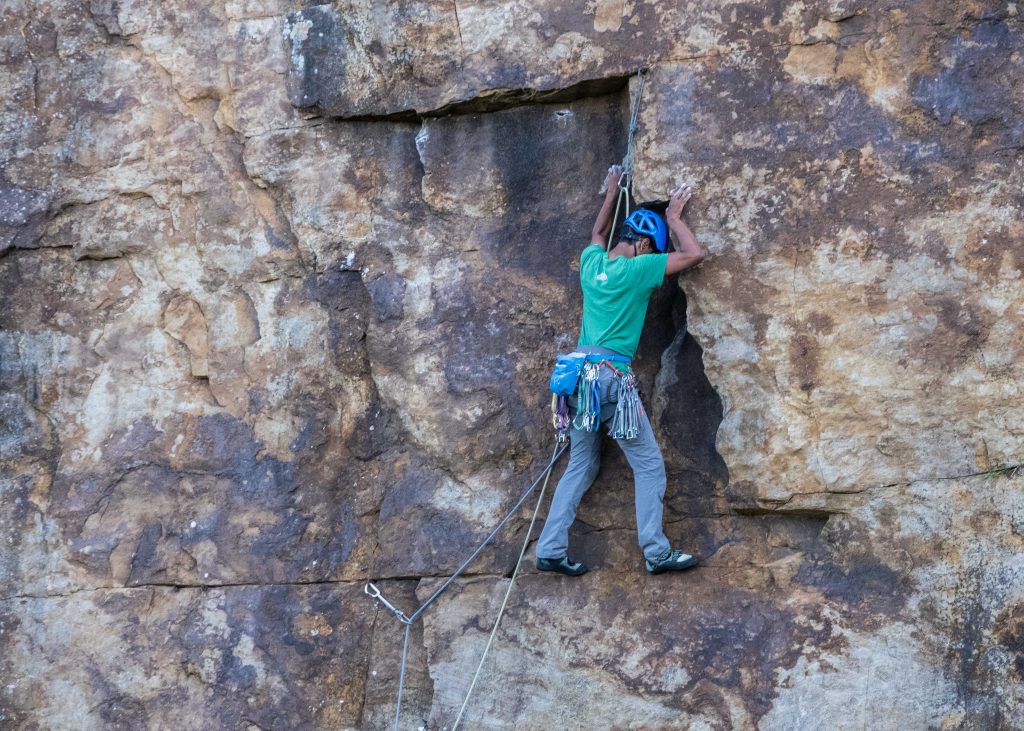
I hadn’t realised it was so easy to get to the top of this amazing rock, so was quite delighted with this as my vantage point over the now deep emerald coloured and densely carpeted quarry.
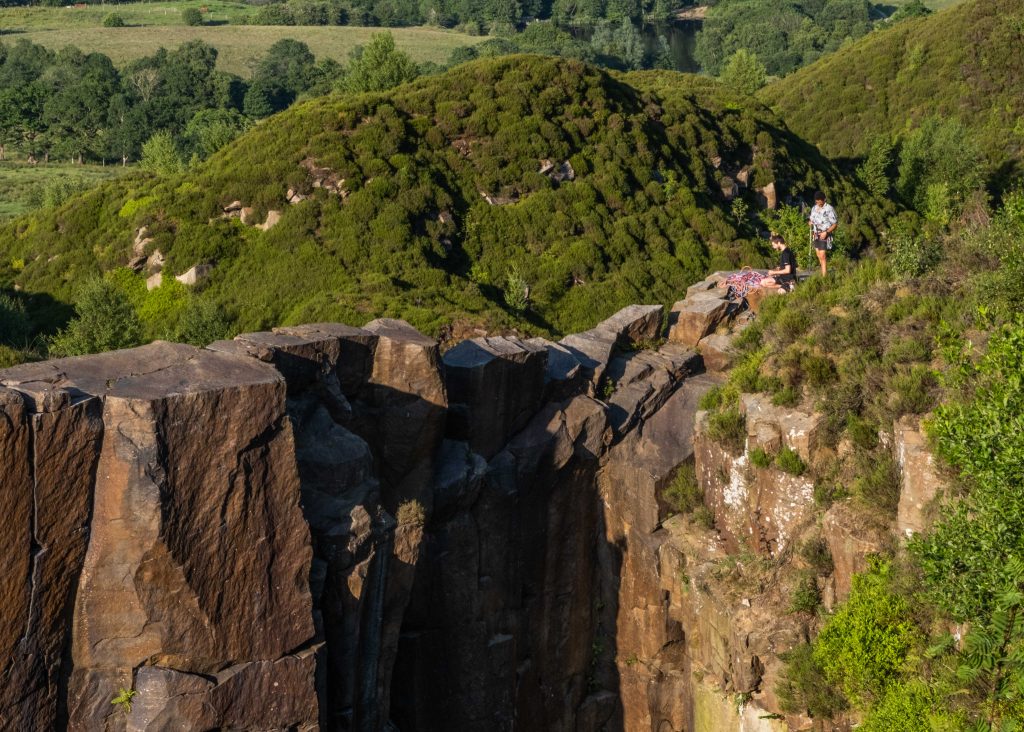
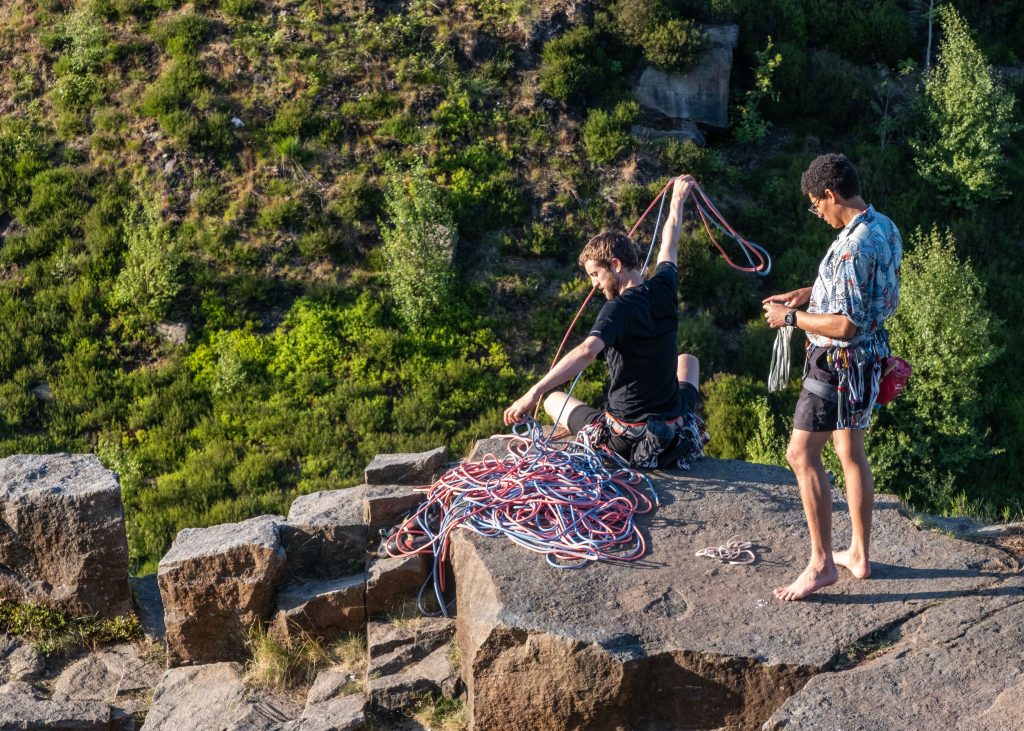
Obviously, it wasn’t too easy to get a view down on to the climbers from here. Alec gave me a bit of good advice though – apparently the rule of thumb for standing on a cliff is the nearer to edge you are, the lower you need to be. That makes a lot of sense and even though I’ve a good head for heights, I kept my distance from the sheer drop.
Shortly after, Allan arrived on the summit making the whole ascent looking far easier than I’m sure it really is.
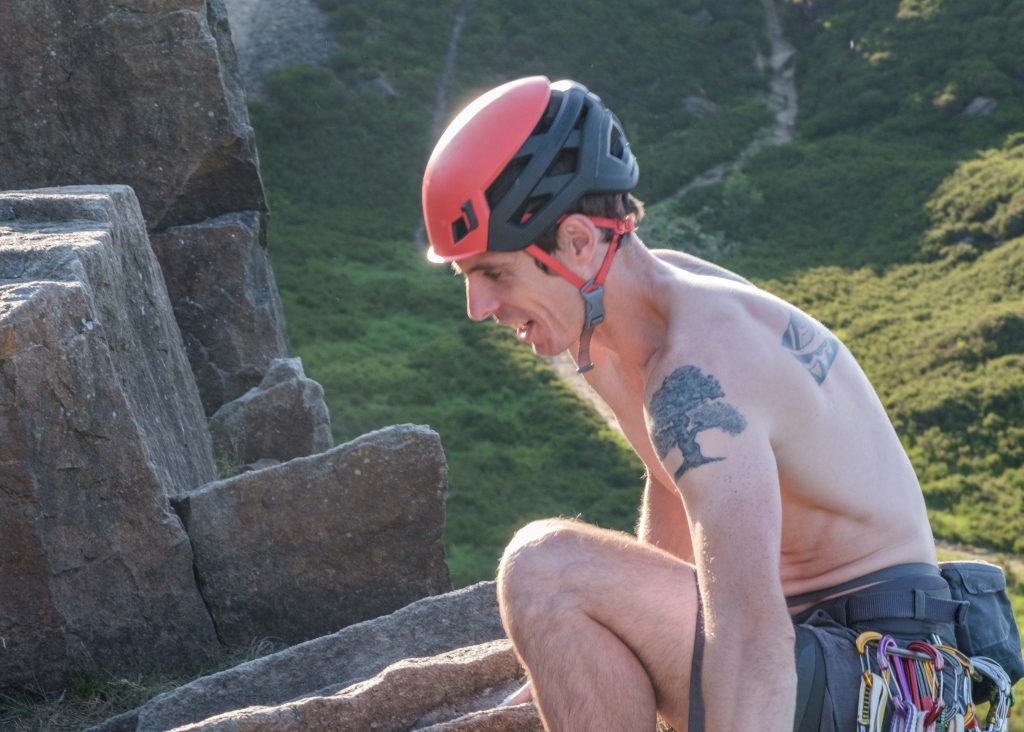
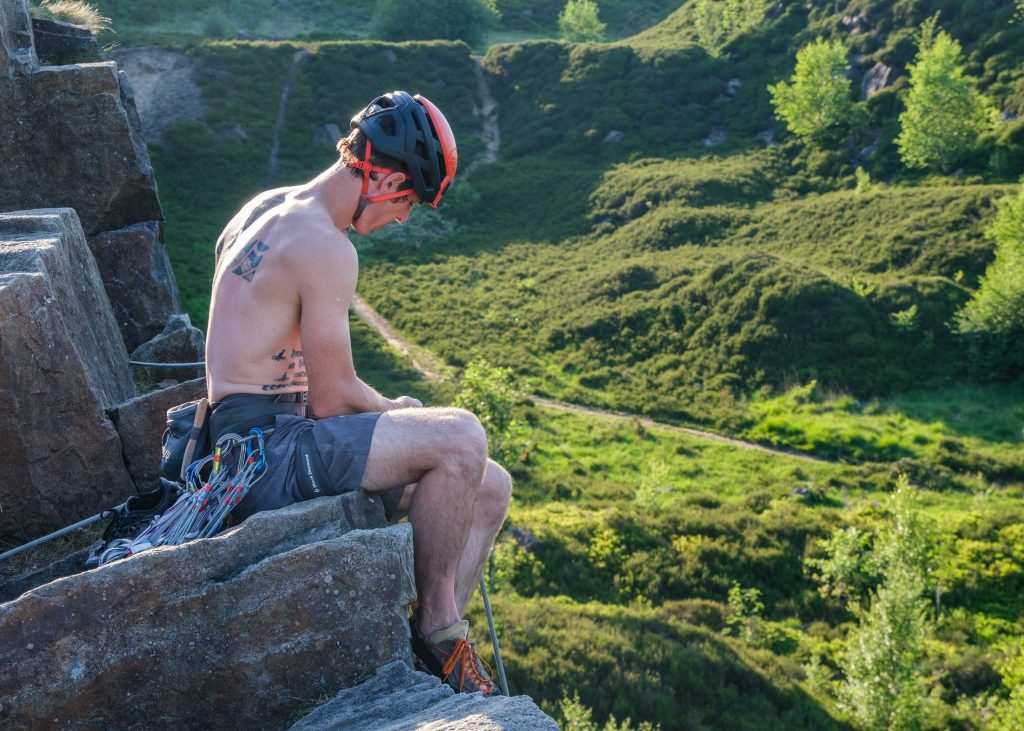
Back at the base of the quarry, the pairs moved on to different routes, but still very much in the area of The Prow. This part of the quarry had also attracted another pair of climbers who, to my eyes, looked as though they were about to embark on free climbing as, while they wore climbing shoes, they weren’t using ropes, harnesses or any other climbing gear I’d expect to see. But, they did have a couple of large, chunky and heavily padded mats positioned at the base of the rock face they were starting to climb.


This is when I learned about bouldering. At a first glance I couldn’t quite work it out, but soon realised this somewhat more subtle form of climbing is really all about physical strength. Boulderers manage to move across a rock face using only the slightest of hand (or finger-tip holds, more like) and slimmest of ledges to balance on. The idea is not to gain height, but to climb tricky moves, which often end with the climber jumping down on to the mat below.
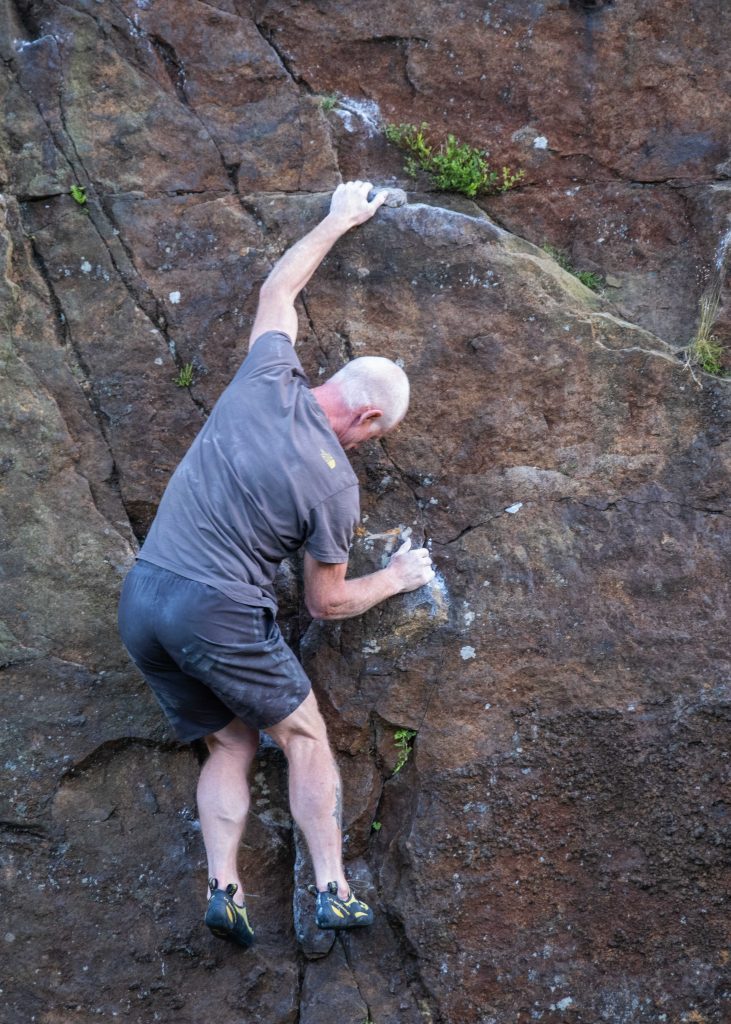

I chatted to Dean and Roger for a while, who’d actually travelled quite a distance to be at Wilton that evening. Still in the early days of lockdown easing, they explained that more popular spots for climbing, such as some in the Peak District, were becoming a little too busy as climbers flocked to get back into their sport. What’s more, the enclosed aspect of the Wilton Quarries was a real benefit in sunny weather, conveniently offering much more shade than other naturally exposed areas.
After watching the pairs start their second climb, I headed back to the top of The Prow.
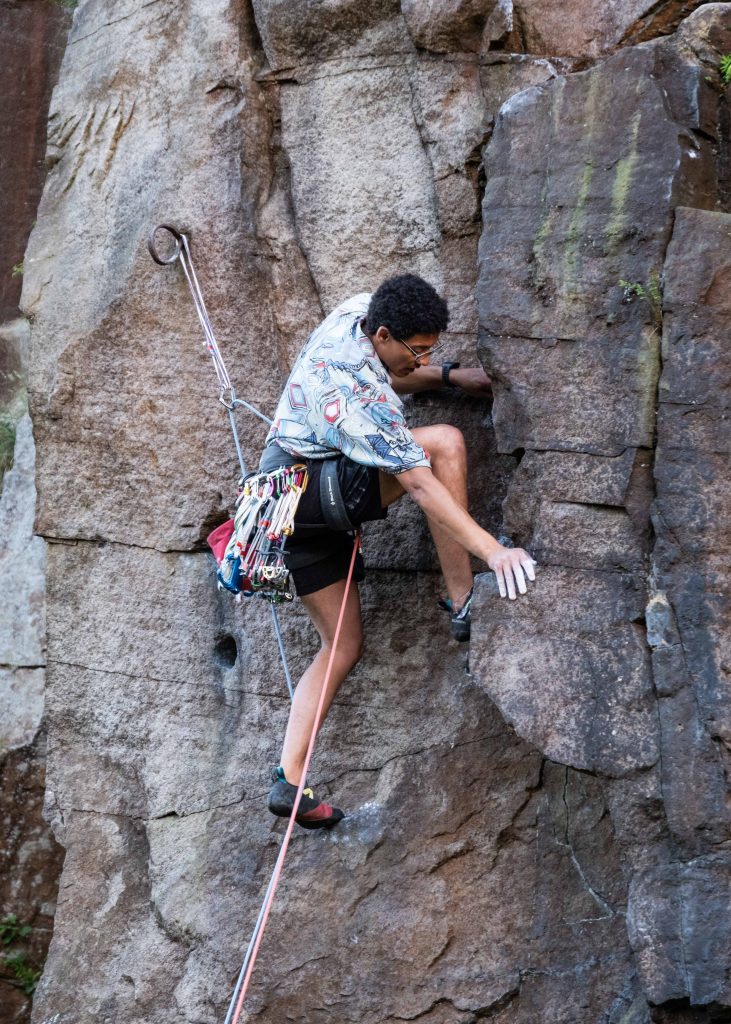
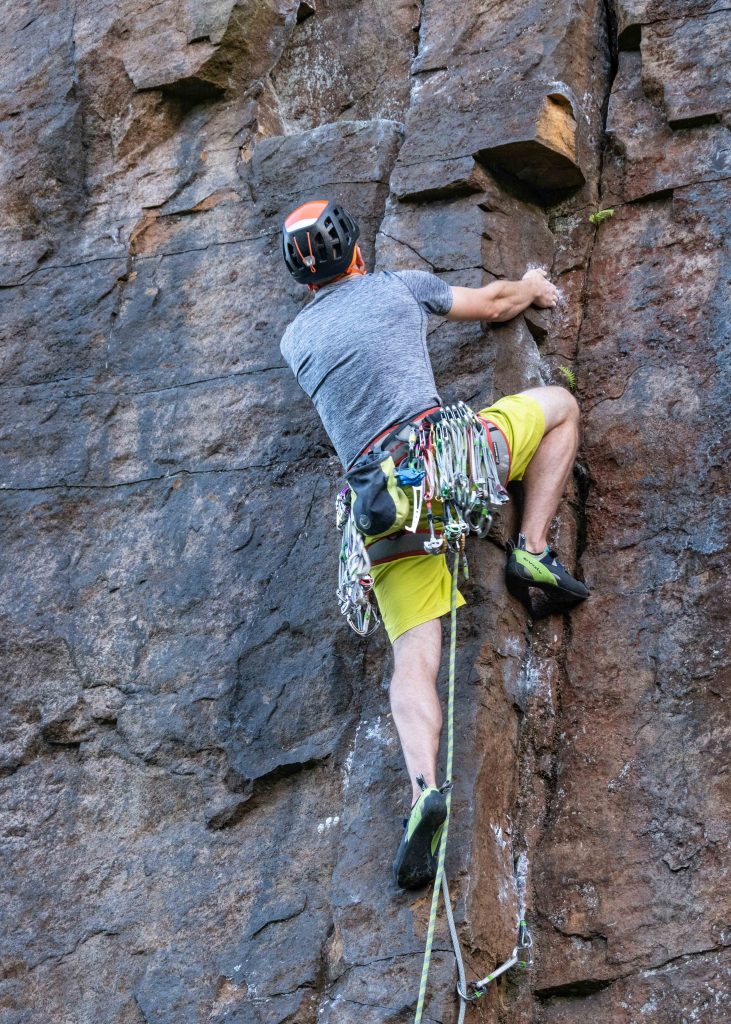
The sun was sinking lower and the light was starting to take on a lovely golden glow. It was getting on for 9pm in the evening and it still felt as though the quarry was buzzing with activity – climbers in all directions, still enjoying the opportunities this long warm evening had to offer.


I questioned in my first blog how the moors and specifically these quarries have adapted to maintain their relevance in our lives today. From this awesome natural observation point, seeing all this activity, there couldn’t be a better indication that the moors absolutely still mean a lot to so many people – and long may this continue.
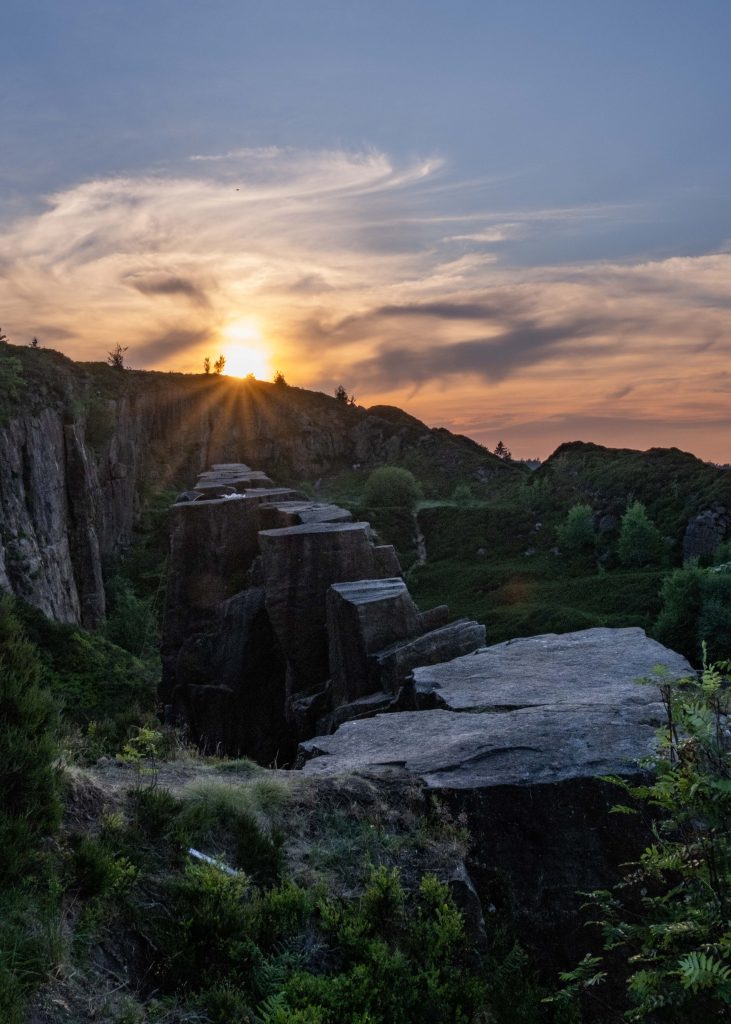
Before I sign off, I just want to thank Allan and his friends Louise, Jon, Street, Tom and Alec plus boulderers Dean & Roger. I thoroughly enjoyed spending an evening at Wilton with you all and learning more about climbing. I mentioned earlier that Allan is a keen photographer, so please do head over to his Instagram gallery albe_outdoors to see his fantastic climbing and landscape shots!

Manchester Ghost HuntingJuly 16, 2020
Bolton's New Normal July 16, 2020


Nice calm and easy feel to the evening, brought out by the photography. Scares the devil out of me though, just the thought of it!
Thanks Dave – what these guys do is amazing. Really pleased to have spent such a great evening with them all!
Stunning photos Julia and a very thoughtful commentary. Amazing how a little elevation opens up the landscape.
Cheers Dave – thanks very much for the feedback. Yes, you’re right, the view of quarry, and the moors beyond, is stunning from one of these higher vantage points!